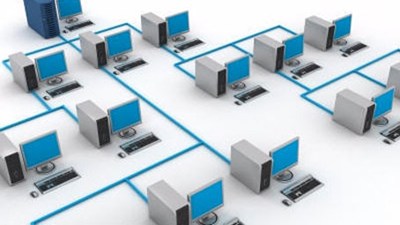Al Bredenberg| Thomasnet
Research by Mint Jutras, an enterprise-computing consulting firm based in Windham, N.H., finds that SaaS-based applications today represent 22 percent of software installations in manufacturing and distribution companies. That penetration is expected to grow to 45 percent within 10 years.
Survey respondents said that the most important characteristics they look for in a SaaS solution are having control over upgrades, consistent support for global operations, allowance for rapid and frequent upgrades, and the ability to migrate easily from on-premises to SaaS.
Louis Columbus, senior manager for Microsoft Enterprise Systems at software provider Cincom, writes in Forbes that cloud-based systems are attractive to manufacturers because they allow for quick rollout and easy customization. In his work, Columbus has visited many manufacturers in the high-tech, industrial, aerospace, and defense industries and found that their businesses are driven by pressure to increase accuracy and speed up processes.
To meet those challenges, cloud-based platforms are helping companies capture and apply knowledge and intelligence through advanced analytics, business intelligence (BI), and rules engines. Cloud services are allowing fast deployment of supplier and reseller portals, collaboration environments, marketing automation, human resources, and customer service and support. Cloud providers are doing a good job of seamlessly integrating such services into their offerings and providing management tools like dashboards.
Matt Haller, principal at Chicago-based professional-services firm Baker Tilly Virchow Krause, writes that cloud-based ERP can provide an effective alternative to in-house systems that “have been cumbersome, required expensive on-site specialized IT resources to run and maintain the system, and have not provided quick access to the necessary information to inform decision making.”
Haller cited the case of Hiawatha Rubber, a Minnesota manufacturer in the precision rubber molding business. In shopping for a new ERP system, Hiawatha evaluated a cloud-based ERP system called Plex Manufacturing Cloud and found that it could provide “deep functionality and flexibility at a much lower cost” than the company’s obsolete on-premises system. Implementation of the Plex solution took only three months. Haller quoted a Hiawatha executive who said that after the deployment, “plant floor employees now see upcoming jobs and where materials are located in real-time…Now when a customer calls for a rush order we can tell them in minutes when their order will be ready, compared with several hours and a significant amount of manual effort” under the previous system.
David Miller, chief security officer for Covisint, which provides cloud systems for the automotive sector and other industries, told me in an interview that he thinks the move toward cloud computing is part of a larger phenomenon he refers to as “enterprise deconstruction,” which is “driving large organizations to outsource a lot of their business function” to others who can do it more effectively and at lower cost. During the 2008-2009 downturn, he said, many companies “fired most of their internal IT organizations and are now saying, ‘I don’t have the people to do these projects; I have to outsource. So they’re trying to be as efficient as possible by outsourcing things that aren’t their core competency.”
Understandably, some internal IT organizations have been leery of this trend. Miller thinks that “cloud computing is not being driven by the IT organization. The business is really driving this. It’s driven by the businesses deciding to outsource a function that it doesn’t make sense to do in-house anymore. The business is making the decision, and IT departments are having to react to it.”
Kristof Kloeckner, general manager for IBM Rational Software and former CTO for cloud computing, gave offered a more nuanced view of the relationship between IT and cloud services. He believes the increasing use of cloud computing is reflective of the changing role of IT within the enterprise.
“What some people tell me,” he told IMT, “is they see cloud computing as one of the major elements to driving transformation of the IT delivery services from the traditional way of ‘We build it, we own it, we run it,’ to a new view that ‘We are responsible for it,’ which includes sourcing solutions from wherever it’s most appropriate, whether that’s in-house or through managed hosting, or from a provider completely external.”
Not all computing solutions need to be hosted and operated from the same location using the same resources, but decision makers should be prepared to adopt a flexible approach to deploying solutions. “Which workloads have to be supported in which environments with which quality of service?” Kloeckner added.
That could mean keeping some solutions on-premises while handing off other tasks to the cloud, whenever it makes sense to do so.






![Cloud computing: Fact or fiction? [infographic]](https://xcluesiv.com/blog/wp-content/uploads/2013/02/Cloud-computing-Fact-or-fiction-infographic.jpeg)






